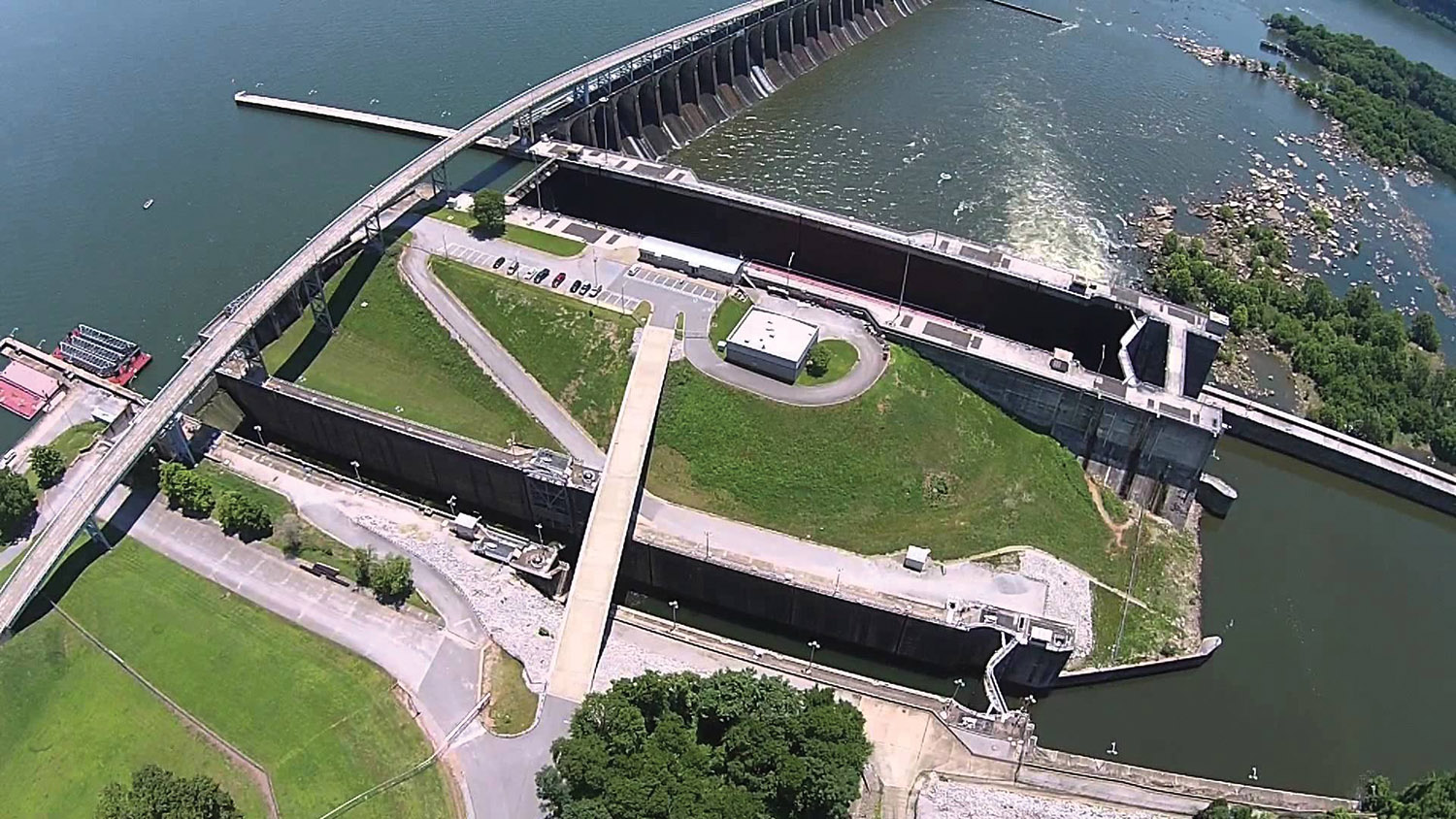The main lock chamber at Wilson Locks and Dam closed for additional inspections and possible emergency repairs after divers discovered cracking September 25 in the lock gates on both the land and river sides.
Wilson Locks and Dam is located at Tennessee River Mile 259.4 near Florence, Ala.
Closing the lock is a precaution to prevent further damage to the gates and any possible loss of the lock’s functionality,” Lt. Col. Robert Green, Nashville Engineer District commander, said in a news release. “We value our partnership with the navigation industry and recognize the economic importance the inland waterway lockage system serves for delivering goods to the public. We are assessing the situation and formulating a plan of action to repair and reopen the lock chamber.”
Green stressed the importance of safety as continued operation of the lock without repairs could result in the gates becoming jammed, trapping any vessels inside the lock.
The district advised the public that the 60-foot by 300-foot auxiliary lock at Wilson would open at 6 a.m. September 27 and be ready for use. Passing navigation traffic through the auxiliary lock is expected to increase locking time by up to 16-24 hours for a typical 15-barge tow.
Additionally, as extreme weather can affect safe operations during lockages, the Corps of Engineers said it was tracking the projected inland path of the remnants of Hurricane Helene and would continue to monitor the weather and adjust operational procedures to ensure safety as necessary.
The Tennessee Valley Authority owns the locks and dams along the Tennessee River, and the U.S. Army Corps of Engineers operates and maintains the locks for navigation, in partnership with TVA. The main lock chamber was completed in 1959, according to the Nashville Engineer District, meaning it is beyond its 50-year design life. The auxiliary lock chamber will turn 100 years old in 2025.
Tennesse River Valley Association Executive Director Cline Jones said he expected a status call with industry to be scheduled in the coming days after a complete assessment.
Jones said it was possible that repairs could take as long as other unscheduled repairs this year at Holt Lock on the Black Warrior River, where cracks in a monolith forced the lock’s closure in June, and at the Demopolis Lock on the Tombigbee River, where a miter sill failure in January forced a four-month closure.
Delays already had been significant at the Wilson main chamber due to the sinking of a floating guidewall from the remnants of Hurricane Ida in 2021. Jones reported a couple of weeks ago that downbound tows were having to be broken and rebuilt one barge at a time inside the lock chamber’s upper gates, which was taking up to 12 to 15 hours, with no downbound traffic permitted after nightfall. Helper boats had been assisting upbound lockages, which were taking about four to five hours to lock through.
In a letter to the TVA board of directors in August, Jones warned, “We expect to see similar disruptions in the future as our nation’s waterway infrastructure continues to age and further degrade. Army Corps trust fund and lock and maintenance budgets can only do so much to ensure waterway benefits into the future.”
He noted that the average age of the 13 navigation locks on the Tennessee River is 75 years. Additionally, he said, roughly 160 Tennessee River ports and terminals create $8 billion in economic development benefits and result in $1 billion in shipper savings annually.



